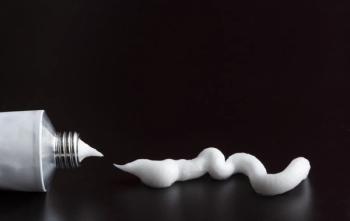
Radiofrequency ablation for uterine fibroids
In a panel discussion at AAGL’s 50th Global Congress on MIGS, in Austin, Texas, Kimberly Kho, MD, MPH, along with Jessica Shepherd, MD, MBA, FACOG, and Craig Sobolewski, MD, discussed utilizing radiofrequency ablation for treatment of uterine fibroids.
In a panel discussion at AAGL’s 50th Global Congress on MIGS, in Austin, Texas, Kimberly Kho, MD, MPH, along with Jessica Shepherd, MD, MBA, FACOG, and Craig Sobolewski, MD, discussed utilizing radiofrequency ablation for treatment of uterine fibroids.
Kho, director, Fellowship in Minimally Invasive Gynecologic Surgery, associate chief of Gynecology and vice chief of staff at the University of Texas Southwestern Medical Center, Dallas, Texas, began her section of the panel discussion by exploring the need for alternative options of fibroid management.
Hysterectomies are the most commonly performed procedure on patients, according to Kho. However, the long-term effects are unknown if hysterectomies are offered as the only treatment option for uterine fibroids. Also, Kho said multiple studies have shown women are at an increased risk for developing anxiety and depression following hysterectomy. Because of this, women want a treatment for uterine fibroids that don’t involve hysterectomies. She also added that alternatives to myomectomy are needed as well.
“The prowess and technical expertise that we’ve been able to harness and develop here within this group of people is really amazing, but not every woman wants a myomectomy, and it might not be the right procedure for every patient,” said Kho.
As an alternative treatment for uterine fibroids outside of myomectomy and hysterectomy, there is radiofrequency ablation (RFA). Currently, there are 2 RFA devices approved to treat uterine fibroids in the U.S.—Acessa (Hologic) approved in 2012 and Sonata (Gynesonics) approved in 2018. Additionally, the American College of Gynecology released an updated practice bulletin in mid-2021 stating that RFA can be used as a minimally invasive treatment for uterine fibroids. Previously, the association had considered hysterectomies as the gold standard for treatment of uterine fibroids.
Despite the potential of these minimally invasive devices, more information on fertility/pregnancy outcomes, including live births, long-term outcomes, pregnancy rates, and complications is needed, according to Kho.
Differences in devices
Sobolewski, MD, minimally invasive gynecologic surgeon, Duke Health, and assistant professor, Department of Obstetrics and Gynecology, Duke University, Durham, North Carolina, discussed the differences in the 2 approved RFA devices during his portion of the panel.
Acessa utilizes laparoscopic radiofrequency volumetric tissue ablation (RFVTA) through a laparoscope and an intraabdominal ultrasonic probe that has low voltage, high frequency alternating currents transmitted to fibroid tissue through a needle electrode. This elevated temperature from the RFVTA causes tissue destruction by heat created through ionic friction which then spreads by conduction resulting in cellular death, according to Sobolewski.
Sonata, however, utilizes transcervical fibroid ablation (TFA), which is an RFA needle placed under transabdominal or transrectal ultrasound guidance. The Sonata device is specifically equipped with an 8.3 mm tip diameter, two ellipsoid treatment overlays, and an articulating ultrasound tip.
Following a review of pivotal study data for both devices, Sobolewski concluded that both transabdominal and transcervical ultrasound-guided radiofrequency ablation of leiomyomata are safe and effective uterine sparing options for the symptomatic relief of uterine fibroids.
Jessica Shepherd, MD, MBA, FACOG, CEO of Sanctum Med + Wellness, and ob-gyn and MIGS at Baylor University Medical Center in Dallas, Texas, also dove into the benefits of RFA for uterine fibroids.
“I’ve been doing this procedure, specifically Acessa, since 2015/2016, so it’s nice to see the evolution of this technology and energy into what we have today. And it’s really eloquent and profound that we are at the cutting-edge of something that is not new technology,” said Shepherd.
She said oftentimes patients are only offered hysterectomy for treatment of their fibroids, and this is especially the case for Black women. In fact, the risk of developing fibroids is 2 to 3 times higher in Black women vs White women. Also, Black women who underwent hysterectomies were 40% more likely to develop complications, nearly 3 times likely to have a long hospital stay, and 3 times as likely to die.
To avoid this, Shepherd uses RFA in her practice. Some of the benefits of this procedure include that it can be delivered through a transvaginal or transcervical approach and all approaches are similarly effective. Also, there is no morcellation, no uterine incisions, faster recovery time, minimally invasive, improved symptoms, and low complication rate just to name a few.
Finally, Shepherd expressed the need to do a better job advocating for patients when it comes to treatment options, such as explaining there are more options than hysterotomy or myomectomy for fibroids. She suggested that physicians share information with their patients regarding the procedure including any incisions, how the energy is delivered, what the device looks like. and how the fibroids are being treated.
Reference:
1. Kho K, Shepherd J, Sobolewski C. Panel 2-RF Frequency Ablation of Uterine Fibroids - The New Frontier. Presented at: AAGL’s 50th Global Congress on MIGS; November 15, 2021; Austin, Texas.
Newsletter
Get the latest clinical updates, case studies, and expert commentary in obstetric and gynecologic care. Sign up now to stay informed.










